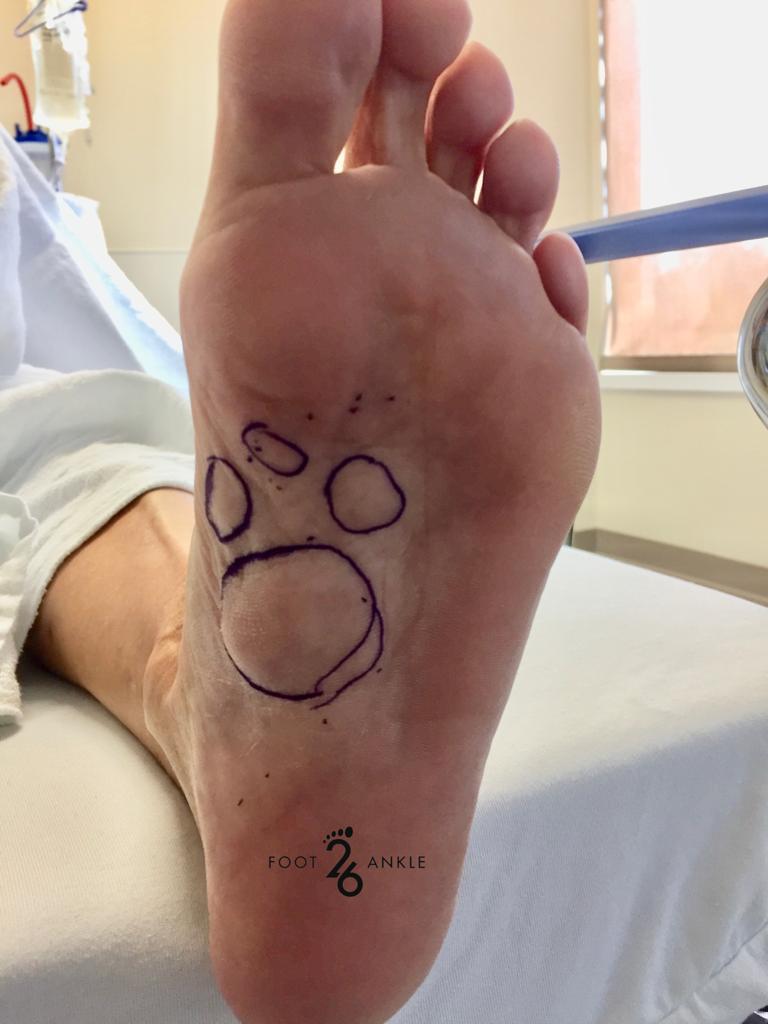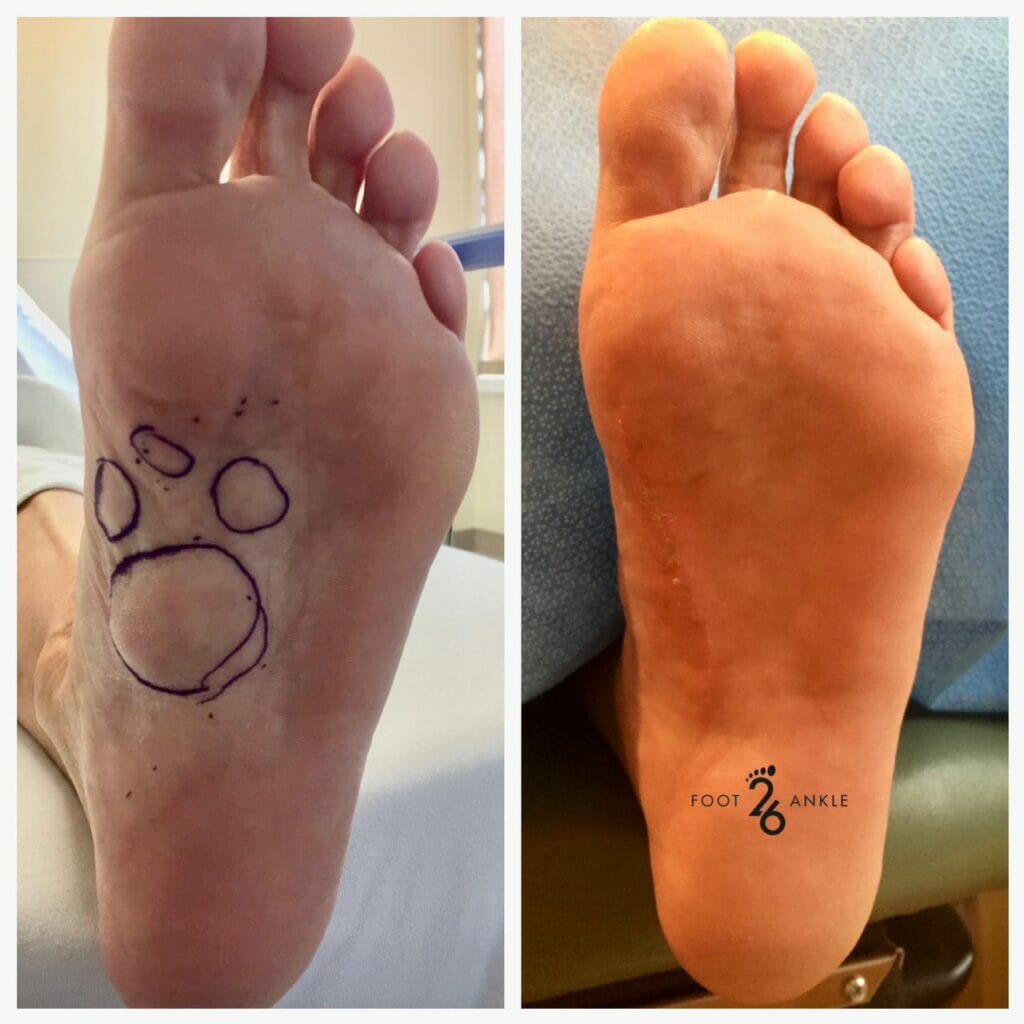The 26 Review
- What is a Plantar Fibroma A rare benign growth located on the bottom of the foot
- Causes Hereditary and previous trauma
- Symptoms Pain, discomfort, arch tightness, and difficulty wearing shoes
- Diagnosis Physical examination and MRIs
- Treatment OTC medications, stretching, orthotics, cortisone injections, laser therapy, and surgical removal

Let’s take a closer look…
A fibroma is a benign fibrous tissue tumor or growth that can occur anywhere on or in the body. Plantar fibromas are rare growths that form on the bottom of the foot or the arch of the foot. Individuals should always get new growths or masses examined by a doctor as soon as they notice them, in order to rule out more serious conditions. When non-surgical measures for treating plantar fibromas, like orthotics, have failed to provide adequate relief of symptoms, surgical intervention is the next best option. Speak with your podiatrist if you believe you’ve developed plantar fibroma to determine the best treatment plan for you.
Causes
As mentioned, there is no distinct reason why people develop plantar fibromas. They tend to appear without a known cause and can affect all people. Individuals with diabetes, epilepsy, and alcohol use disorder are more likely to develop this condition, as well as people with genetic predispositions. Men, individuals of European descent, and people between the ages of 40-60 seem more likely to develop plantar fibromas.
Symptoms

The most common symptoms associated with this ailment are pain and mild discomfort, especially when wearing shoes. Depending on how big the plantar fibroma is, it can feel like a tiny marble or stone is embedded in the skin. The skin on the foot’s arch will curve outward around it or slightly bulge in a way that is unusual for the shape of the foot. As these masses are located in the Plantar Fascia of the heel, the bottom of the foot may feel very tight and/or stiff.
Diagnosis
To diagnose this ailment, usually all that is needed is a physical examination. The medical professional will examine the foot, feel the growth, and compare it to the other foot (if possible). By checking the mass on the plantar fascia, the doctor can confirm it’s a fibroma and not something more dangerous. If the medical professional is unsure of the diagnosis, advanced imaging tests can be ordered such as an MRI and ultrasound. The only way to confirm what the mass exactly is, is to obtain a biopsy.
Treatment

Treating this condition is almost always focused on relieving one’s symptoms. The most common conservative treatments include OTC medications, orthotics, stretching, and cortisone injections. Orthotics can relieve pressure and pain, in addition to wearing more supportive shoes. The doctor might recommend stretching the foot, ankle, and calf to relieve tension and pressure on the plantar fascia. A series of Laser Therapy treatments and supportive tapings can also be a very effective treatment option. Laser Therapy is typically painless and offers an alternative to surgery. In severe cases, surgery may be necessary to treat this condition. The type of surgery received will depend on the symptoms, size, and exact location of the plantar fibroma. However generally, surgery entails making an incision on the bottom of the foot and removing the plantar fibroma and at times, the plantar fascia ligament too. Recovering from surgery can take anywhere from a few weeks to a few months. Speak with your podiatrist today if you suspect a plantar fibroma growing.